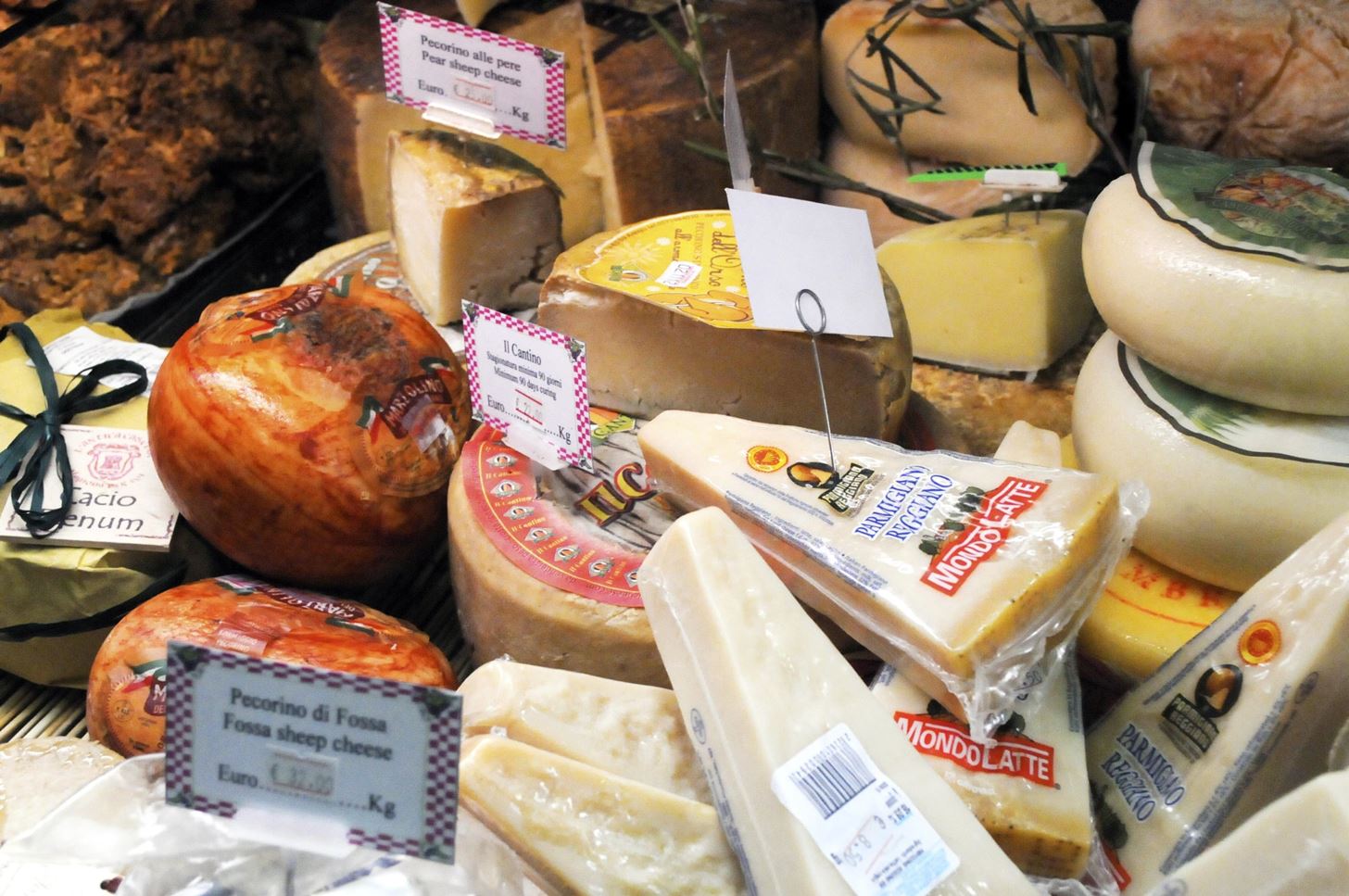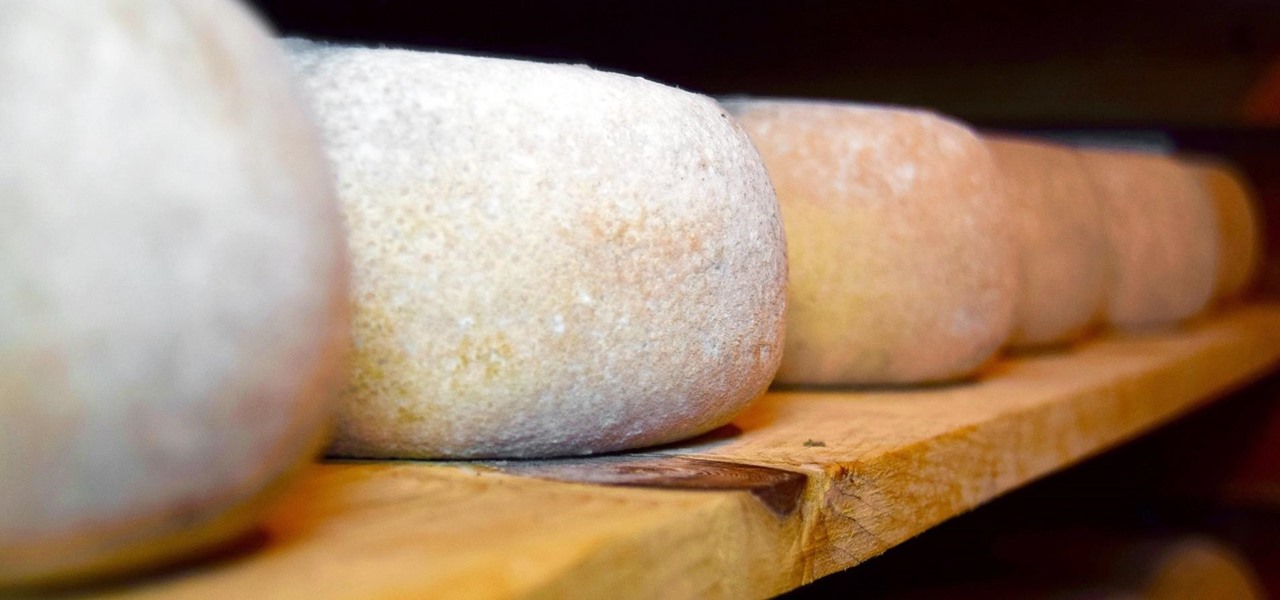If you want to appreciate the value of microbes, look no further than a chunk of cheese. Because cheese roughly traces back to the Neolithic Era, we might say the earliest cheesemakers were the first humans to manipulate microbes—without even knowing it. Now, thanks to microbiologists and the long tradition of cheesemaking, we know a lot more about the microbes that make our favorite types of cheese possible.
The Basics: How Cheese Comes to Be
Milk, microbes, coagulants, salt, and flavorings are the raw ingredients of most cheeses. Cheeses can be made from a variety or mix of milks, including cow, goat, sheep, or even buffalo.
To make cheese, milk is formed into liquid whey and solid curds, and then separated. The techniques and addition of enzymes and bacteria inoculants impact the ultimate flavor. Some soft cheeses are finished at this stage, while others might go through additional processing to remove moisture, improve the body, influence flavor by washing, and finally, ripen the cheese through aging.
During the ripening process, microbes take center stage. Either naturally present or added, microbes, including bacteria and fungi, give each cheese its distinctive flavor and look.

In today's marketplace, industrially-produced cheese and artisanal cheese are offered for sale, side by side. While the science is the same, these cheeses are made from different processes and the products are different as well. Large companies that produce cheese are aiming for a standard flavor, while artisanal cheesemongers frequently introduce variation into each batch. In whatever form, microbes (and hard work) are what make the cheese.
What About Those Cheese Microbes?
In the last several years, microbiologists have turned cheesemaking into a laboratory science. By isolating and examining microbes, like those used in blue cheeses, scientists can study how microbes changed over time, and how we might manipulate microbe communities outside of the cheese industry.
"Cheese has been made for close to 10,000 years, and it's an example of how humans have very precisely manipulated microbial communities without even knowing the details," researcher Rachel Dutton, assistant professor in UC San Diego's Division of Biological Sciences, said in a school paper interview.
People figured out that if they changed the moisture this much or added this ingredient or that, it's going to create this type of community instead of this other type of community. So I think it's interesting that we can learn from this history of cheese making how we could actually manipulate microbial communities.
In a study published in the journal Cell, researchers from Dutton's team at UC San Diego used DNA sequencing methods to look at the diversity of microbes found on cheese. Sampling 137 cheeses from 10 countries, the research team made an interesting discovery.
While artisanal cheesemakers often attribute the unique flavor of their cheese to a unique geographic location, oftentimes a cave long used for making cheese, it is the microbes that make the cheese—not the terrain in which it ages. And although there is diversity, there are only about 14 types of bacteria, and 10 strains of fungus that dominate the cheesemaking business.
The research adds to information already out about successive bacterial communities. We talked recently about the development of bacterial landscapes in the tray of coffee machines, where a bacterial community is established, and early colonizers are gradually replaced by other bacteria over time. A similar process works for cheese.
In the study, scientists found the same process when sampling a cheese from Vermont over a 63-day period. The cheese was initially inhabited by Candida yeast that is commonly found in raw milk, along with Leuconostoc bacteria and Proteobacteria. In about a week, bacteria like Staphylococcus took over the Proteobacteria, and in time, other bacteria like Penicillium took up prominent space on the cheese rind.
In a separate study published in the journal Current Biology, scientists at the University of Paris-Sud looked at how cheesemakers have inadvertently sped up the evolutionary process by selecting and artificially combining microbes that lend bits of themselves to other microbes in a process called adaptive horizontal gene transfer.
Horizontal gene transfer, or the sharing of genes, is a process that can aid the development of antimicrobial resistance.
Researchers compared the genomes of ten Penicillium species found in blue cheeses and Camembert to find that gene transfer between species during cheesemaking occurred more quickly than in nature. Study authors were able to find a common ancestor to the Penicillium species and trace their gradual adaptation forward into different species.
What they did not expect to find were pieces of DNA that more recently became part of the of the Penicillium fungi as a result of gene sharing, or transfer, not slow adaptation. While these groups of DNA, named Wallaby and CheesyTer by study authors, aid the cheesemaking process and add distinctive flavor to these cheeses, they do not occur in wild strains of Penicillium.
Scientist note their study suggests "that caution is required concerning the introduction of genes into microorganisms, as these genes could readily be transferred to other species in the food environment."
As a learning environment, a cautionary tale, or just a favorite food, cheese has a great deal to offer. In the meantime, the next time you step up to the deli counter? Just say cheese!
Just updated your iPhone? You'll find new emoji, enhanced security, podcast transcripts, Apple Cash virtual numbers, and other useful features. There are even new additions hidden within Safari. Find out what's new and changed on your iPhone with the iOS 17.4 update.


























Be the First to Comment
Share Your Thoughts